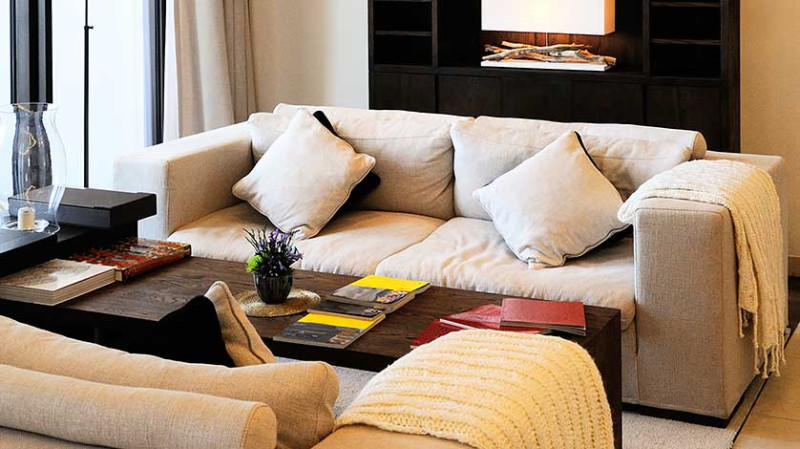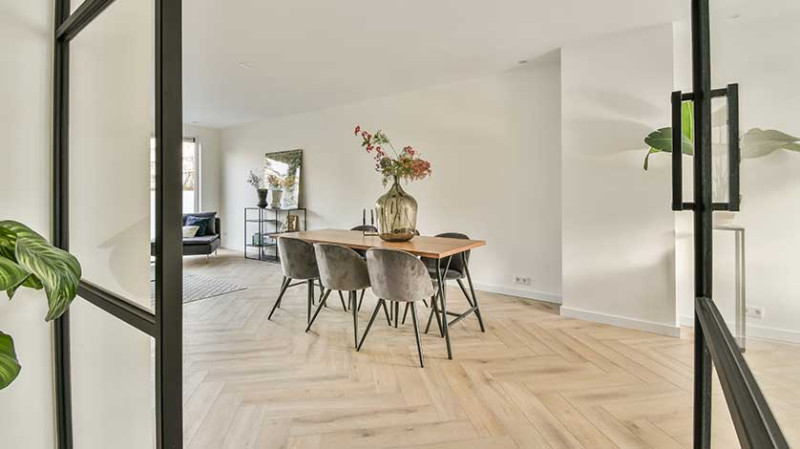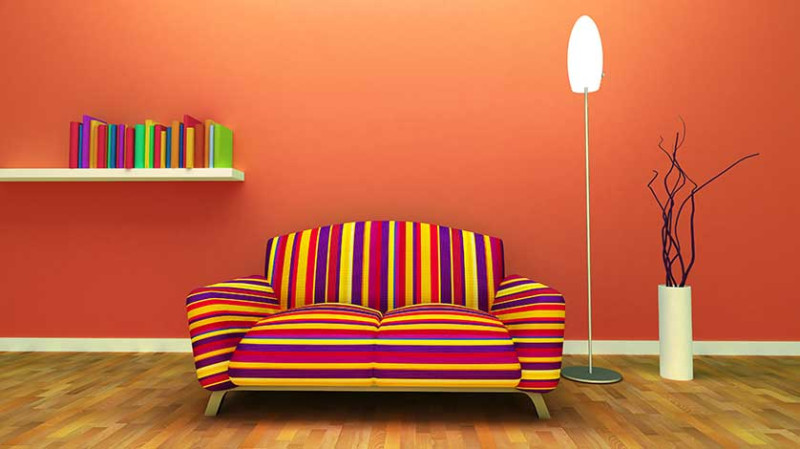
Area rugs are more than just pieces of decorative floor covering – they’re powerful tools in interior design. With the right rug in the right place, you can define a space, anchor furniture, add warmth, and elevate your overall design aesthetic. However, many UK homeowners and professionals alike fall into common traps when it comes to rug placement, sizing, and styling. Whether you’re a DIY enthusiast tackling your first home project or an experienced tradesman keen on guiding clients toward better design choices, it's crucial to understand how to avoid these mistakes.
In this blog, we’ll identify some of the most common area rug mistakes and, most importantly, offer practical solutions on how to fix them. We’ll also share essential dos and don’ts that can guide you through choosing and using area rugs in a way that brings harmony, balance, and comfort to any interior space.
1. Using Rugs that Are Too Small for the Space
This is perhaps the most frequent mistake in interior design – using rugs that are disproportionately small for the room. A small rug floating in the middle of a large lounge or grounded only beneath a coffee table can make the room feel disconnected and off-balance. Many people make the budget-conscious choice of a smaller rug, but it often creates more visual problems than it solves.
In living rooms, your rug should ideally be large enough to sit under the front legs of all your major furniture – sofas, chairs, and side tables. Better yet, aim for the rug to be large enough to accommodate the entire seating arrangement. This grounds the furniture and creates a unified zone.
In dining areas, the rug must be large enough for the table and all dining chairs – even when pulled out. If it’s too small, chairs will catch on the edge when moved, which is both annoying and damage-prone.
Fix: Measure your space carefully before shopping. In the UK, common large rug sizes include 160x230 cm, 200x300 cm, and 250x350 cm. The right size is worth the investment for the cohesiveness it brings to your design.
2. Ignoring Rug Placement Rules in Open Plan Spaces
Open-plan living is growing in popularity across the UK, combining kitchen, dining, and lounge zones into unified space. But without clear definition, these multi-functional areas can quickly become chaotic. Rugs are your best friend here.
Improper rug placement might lead to areas that feel disjointed or cluttered without any visual hierarchy. Placing a rug too close to the kitchen area or choosing one that overlaps multiple zones disrupts spatial clarity, making the room feel smaller and confused.
Fix: Use rugs to clearly segment different functions. Place a large area rug under the lounge seating, another under the dining table, and leave the kitchen floor bare or opt for a durable, washable runner. Each rug should visually delineate the zone without overlapping into the next.
3. Overlooking Furniture Proportions
Your rug size and shape should complement your furniture layout. A mistake often seen in both modern and period homes is mismatched proportions – placing a tiny oval rug beneath a substantial sectional sofa, or using a circular rug beneath a rectangular dining table.
When rugs and furniture are mismatched in shape or size, it can make the room feel awkward or less anchored. The rug should feel integrated into the space, not like an afterthought.
Fix: Choose a rug that reflects the geometry of the room and the furniture – rectangular rugs for rectangular dining tables or living rooms, round rugs under circular dining sets or coffee tables. Match the scale to avoid any imbalance.
4. Choosing the Wrong Material for the Room
Material matters more than most people expect. While that luxurious high-pile rug might look gorgeous in a Pinterest moodboard, it may not suit a high-traffic hallway or a home with pets. Choosing the wrong type of rug fibre can lead to faster wear, difficult cleaning, or even safety hazards (like slipping or curling rug corners).
Fix: Consider the function of the space before choosing the rug material.
| Room | Recommended Rug Material | Why |
|---|---|---|
| Living Room | Wool/Polypropylene mix | Durable, soft, and easy to clean |
| Dining Room | Flat-woven or low pile | Easier to move chairs and clean food spills |
| Bedroom | High-pile or shag | Soft comfort underfoot when stepping out of bed |
| Hallway | Jute or synthetic fibre | Durable and handles heavy foot traffic well |
5. Neglecting Rug Pads
Many DIY decorators in the UK overlook rug pads, believing they’re optional. However, skipping this essential layer can be both a design and safety mistake. Area rugs that slip, bunch, or curl are not only untidy-looking but also dangerous – especially on hard flooring like laminate, wood, or tiles.
Fix: Always use a non-slip rug pad appropriate for your floor type. Rug pads extend the life of your rug, enhance comfort underfoot, and keep it securely in place. They also prevent damage to flooring by reducing friction.
6. Using Rugs with Clashing Colours or Patterns
Another frequent design misstep is using an area rug that fights with your existing decor. Bold patterns or overpowering colours that conflict with wall colours, furniture fabric, or other textiles can throw off the room’s harmony.
Fix: When selecting a rug, think of it as part of the whole. If your room already features lots of bold print and colour, opt for a subtle neutral or tone-on-tone rug. Conversely, if your palette is minimal, a patterned rug can serve as a beautiful focal point.
Samples are your best friend. Order swatches or view the rug in natural daylight in your room to ensure it complements the surrounding elements.
7. Using Rugs Solely for Decoration
While rugs can look gorgeous, many homeowners use them only for 'visual effect' without considering their functional value. A beautiful but poorly placed rug, or one that serves no purpose other than decoration, misses half the opportunity to enhance the space.
Fix: Let form meet function. Rugs absorb sound, offer insulation (especially important in drafty period homes across the UK), and provide a soft landing in high-traffic zones. Choose rugs that not only please the eye but serve the needs of the room and its users.
Area Rug Dos and Don’ts
To wrap up, here are some quick golden rules for using area rugs effectively in any UK home:
Area Rug Dos
- Do measure your space and furniture layout before purchasing a rug.
- Do layer rugs for texture and interest – especially in neutral spaces.
- Do choose rugs that fit your lifestyle (e.g. low-pile for pets, easy-clean for families).
- Do use rug pads for stability, safety, and comfort.
- Do allow the rug to anchor and connect your furniture pieces.
Area Rug Don’ts
- Don’t use rugs that are too small or don’t reach furniture legs.
- Don’t place bold, patterned rugs in already-busy spaces without balance.
- Don’t ignore colour, texture, and pattern harmony with the rest of the room.
- Don’t neglect the functional aspect of the rug in high-usage rooms.
- Don’t skip maintenance – vacuum regularly and rotate rugs to even wear.
Final Thoughts
A well-placed rug can be a design game-changer – drawing your room together, boosting comfort and acoustics, and adding character to your home, whether you're redecorating a Manchester flat or renovating a Georgian townhouse in Bath. By steering clear of these common mistakes and applying thoughtful design principles, you can transform your space with simplicity and style.
Ready to upgrade your home? Start with the right rug – and you might be amazed by how it transforms your whole perspective.





